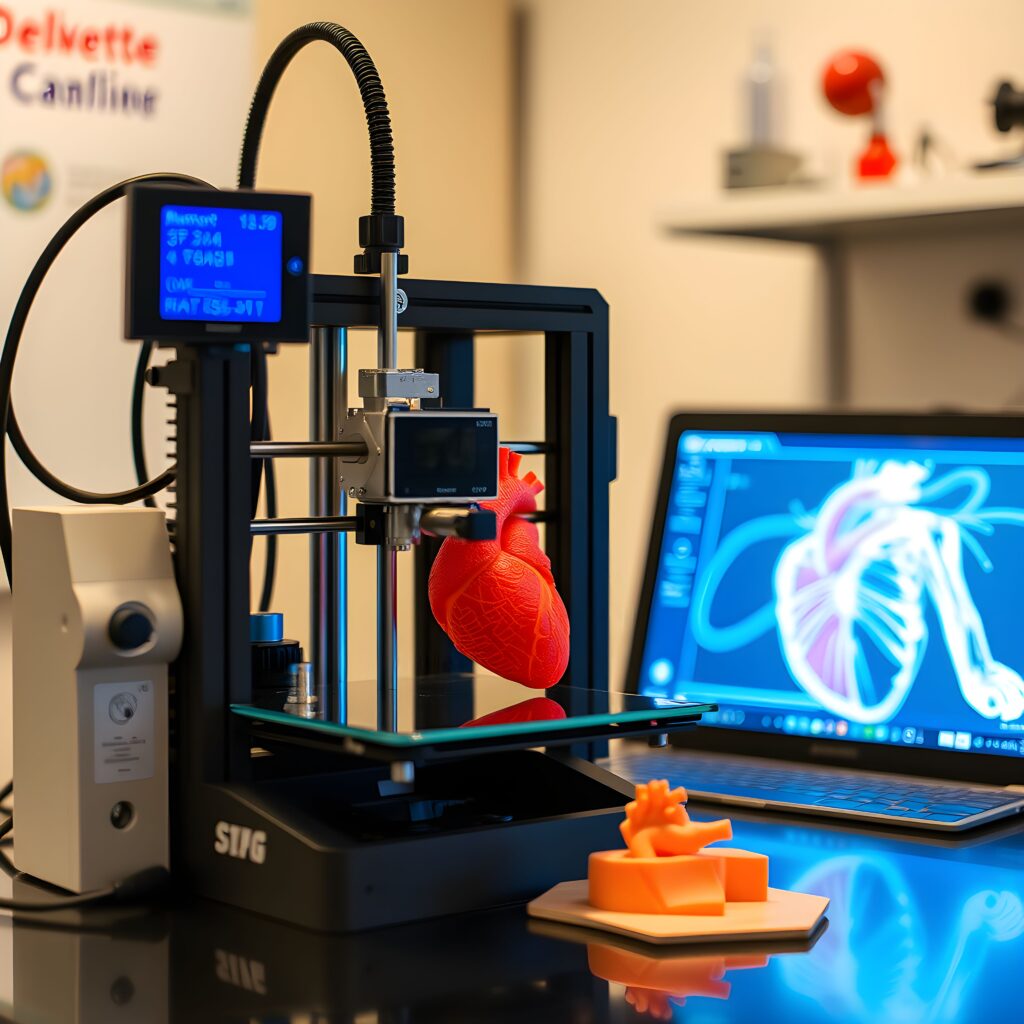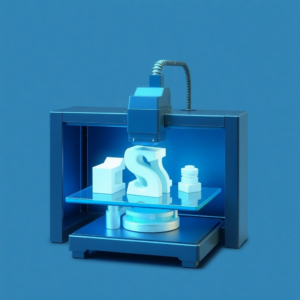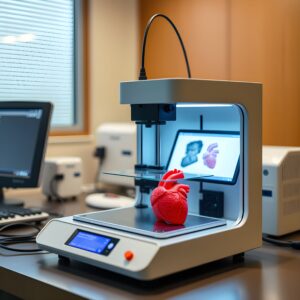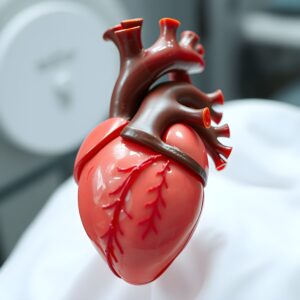The Future of 3D Printing: Emerging Trends and Innovations

The realm of 3D printing is one of the most transformative technological advancements of our time. From its early days as a niche tool for prototyping, 3D printing has evolved into a widely used method of production across multiple industries. Today, we stand on the brink of a revolution, with 3D printing poised to play a central role in manufacturing, healthcare, aerospace, and even sustainability initiatives. The future of 3D printing is not only about improving the technology itself, but also about the way it will change industries and economies globally.
This article dives into the key emerging trends and innovations in the world of 3D printing, offering insight into the transformative potential of this technology. It will cover the evolving applications of 3D printing in manufacturing, healthcare, sustainable production, and the circular economy, providing a detailed look at how this technology is paving the way for an innovative future.
The Evolution of 3D Printing Technology
From Prototyping to Full-Scale Production
In its infancy, 3D printing was seen primarily as a prototyping tool. Designers and engineers used the technology to create quick models to test their concepts. However, as the technology matured, its capabilities expanded. What was once limited to small-scale, low-resolution parts has now blossomed into a tool capable of creating highly detailed, fully functional products with a range of materials.
This shift in use cases— from prototyping to full-scale production— marks one of the most significant developments in 3D printing history. As industries increasingly realize the benefits of on-demand, custom manufacturing, 3D printing is becoming an essential part of their production strategies. The potential for this technology to revolutionize the entire manufacturing process lies in its ability to create complex parts in a fraction of the time and at a lower cost than traditional methods.
Integration with Other Technologies
The future of 3D printing is also tied closely with advances in related technologies. Artificial intelligence (AI) and machine learning (ML) are increasingly being integrated into 3D printing systems, optimizing design processes and material usage. These intelligent systems can suggest design improvements or detect flaws in real-time, ensuring the production of more accurate and reliable parts.
Furthermore, automation and robotics are playing an essential role in enhancing 3D printing workflows. With robots handling the loading and unloading of materials, the speed and efficiency of 3D printing can be significantly increased, leading to faster turnaround times for orders and the ability to scale production in ways never before possible.
3D Printing in Healthcare: Transforming Medical Solutions
Customized Healthcare Solutions
The healthcare sector is witnessing a major transformation due to the integration of 3D printing. One of the key applications of 3D printing in healthcare is the production of customized implants, prosthetics, and even organ replicas. Traditional manufacturing techniques often struggle to provide the level of customization needed for individual patients, particularly in areas like prosthetics and orthopedics.
3D printing, on the other hand, allows for the creation of personalized healthcare solutions that are tailored specifically to the patient’s anatomy. For example, prosthetics can be designed to match the exact shape and size of a patient’s body, providing a better fit and greater comfort. This degree of personalization not only improves the effectiveness of treatments but also enhances the patient’s overall quality of life.
Bioprinting: The Future of Organ Transplants
Perhaps the most groundbreaking innovation within the healthcare sector is bioprinting, which involves using 3D printers to print human tissues and organs. While still in its early stages, bioprinting has the potential to address one of the most critical challenges facing modern medicine— the shortage of organs for transplant.
Researchers are already printing simple tissues, such as skin and cartilage, and are working toward printing more complex organs like kidneys and livers. The ability to print functional human organs could save countless lives and drastically reduce wait times for organ transplants. Although this technology is still in the research phase, its future implications for healthcare are immense.
The Role of 3D Printing in Manufacturing and Industry
On-Demand Manufacturing and Reduced Waste
3D printing has the potential to reshape traditional manufacturing models, offering several advantages that can streamline production processes. One of the most significant benefits is the ability to produce items on-demand. Unlike traditional manufacturing methods that rely on mass production and large inventory stocks, 3D printing enables manufacturers to print products only when needed.
This on-demand model reduces the need for vast storage spaces, excess inventory, and waste, contributing to a more efficient and sustainable production process. In industries such as automotive and aerospace, where parts are often required in small quantities or for specific applications, 3D printing is an ideal solution. By printing only the required parts, manufacturers can reduce both material waste and costs.
Complex Geometries and Design Flexibility
Another key benefit of 3D printing in manufacturing is its ability to produce complex geometries that are difficult or even impossible to achieve with traditional methods. Parts with intricate internal structures or organic shapes can be printed with relative ease, opening up new possibilities for design and functionality.
This flexibility in design allows manufacturers to create lighter, stronger, and more efficient products. For example, in the aerospace industry, 3D printing has been used to produce lightweight, high-strength parts that reduce fuel consumption and increase overall efficiency. The ability to print highly customized parts quickly and cost-effectively also benefits industries like automotive, where customization plays an essential role in meeting diverse customer needs.
Sustainability and the Circular Economy
Recycling and Repurposing Materials
One of the most promising aspects of 3D printing is its ability to contribute to a more sustainable manufacturing ecosystem. In traditional manufacturing, waste is an inherent byproduct of the production process. Materials are often cut or molded into shapes, leaving behind excess scrap that is discarded. In contrast, 3D printing generates very little waste, as the material is deposited layer by layer to build the final product.
Additionally, 3D printing allows for the use of recycled materials. Companies are increasingly experimenting with recycled plastics, metals, and even bio-based materials to reduce the environmental impact of production. For example, some 3D printers can print using recycled plastic bottles or discarded electronic waste, turning these materials into valuable new products. This approach not only reduces waste but also lowers the need for raw material extraction, making 3D printing a more sustainable alternative to traditional manufacturing.
Circular Economy and Local Manufacturing
The integration of 3D printing into the concept of a circular economy is another key driver of sustainability. The circular economy focuses on reducing waste by reusing and recycling resources, and 3D printing can play a crucial role in this vision. By enabling local production, 3D printing reduces the need for long supply chains, which are often associated with high carbon footprints due to transportation emissions.
In a circular economy model, products can be designed for longevity, repairability, and recyclability. 3D printing supports these principles by allowing for easy modifications and repairs to products, which can extend their useful life. The ability to print replacement parts on demand also reduces the need to dispose of products when a single part fails, contributing to a reduction in overall waste.
The Future of Materials in 3D Printing
New Materials: From Metals to Bio-Based Plastics
The future of 3D printing will be significantly influenced by advancements in materials science. While plastics have traditionally been the go-to material for 3D printing, recent innovations have opened up a broader range of options. Metals, ceramics, and even food are being used in 3D printing applications, allowing for the production of more diverse and functional products.
One of the most exciting developments in 3D printing materials is the rise of bio-based plastics. These materials are derived from renewable sources, such as plants, and offer a more environmentally friendly alternative to traditional petroleum-based plastics. As sustainability becomes a primary concern in manufacturing, bio-based plastics are likely to become increasingly popular in 3D printing.
3D Printing for the Environment: Reducing Carbon Footprints
In addition to new materials, 3D printing offers the potential to reduce the carbon footprint of manufacturing. Traditional manufacturing methods, such as injection molding and machining, often require large amounts of energy and produce significant emissions. 3D printing, on the other hand, can be more energy-efficient, especially when combined with renewable energy sources.
Moreover, the ability to print parts locally eliminates the need for long-distance shipping, further reducing carbon emissions associated with transportation. This localized approach to production helps businesses cut down on both costs and environmental impact, making 3D printing an essential technology for the future of sustainable manufacturing.
Embracing the Future of 3D Printing
The future of 3D printing holds immense promise across multiple industries, from healthcare to manufacturing, sustainability, and beyond. As technology continues to evolve, so too will its applications and impact on the global economy. The ongoing advancements in materials, automation, and design capabilities are expanding the possibilities of 3D printing, making it a cornerstone of modern production.
What was once a tool for prototyping is now a critical technology that is reshaping industries worldwide. From the ability to create customized healthcare solutions to enabling sustainable, on-demand manufacturing, 3D printing is poised to play a central role in shaping the future of global production.




